What is an LED stadium light
LED stadium lights are high power floodlighting luminaires designed to distribute light in a sports playing area over long distances. These directional luminaires are installed at appropriate heights around the sports field of a stadium to create a luminous environment that provides excellent visibility for players, spectators and television broadcasting. A stadium is a large venue where sports, concerts, and other events are held. It consists of a field of play either partly or completely surrounded by tiers of sloping seats designed to allow spectators to view the event.
As a place of excitement and spectacle, a stadium is a massive and magnificent facility that covers an expansive area and hosts large influxes of people. Sports lighting systems create virtual daylight at nights to extend the hours of operation. They undertake to create optimal visual conditions for players, develop an engaging environment for a thrilling fan experience, and enable the spectacles, exciting moments and dynamics of games to be captured through HDTV broadcasting, digital photography, and slow-motion recording.
Lighting fundamentals
Lighting is an integral part of stadium design as many events are held outside daylight hours. Stadium lighting is fundamentally about appropriate use of floodlighting. Flood lights that are mounted high around the distant field perimeter are the sole source of artificial light for large-scale facilities where there’re no overhead structures available to install downlighting systems. These luminaires are required to project controlled beams of light for quantitative and qualitative illumination of the playing field.
Stadiums are used to play hosts to a wide range of sports. The most played sports in these facilities are aerial sports such as soccer, football, baseball, and cricket. The vast fields of play for these sports present a significant challenge to lighting. A soccer field spans 59 to 69 meters wide and stretches 100 to 110 meters in length. An American football playing ground is 91.80 meters long and 48.75 meters wide. A baseball field occupies an area of approximately three acres. The oval or circular shaped cricket playing field ranges in size from about 90 to 150 meters across.
Stadiums are often used to host different sports and events, which creates the need for lighting to meet the varied requirements of all applicable sports. To be most effective, sports lighting systems should be designed in conjunction with not just the facility, but also the particular requirements for each sport.
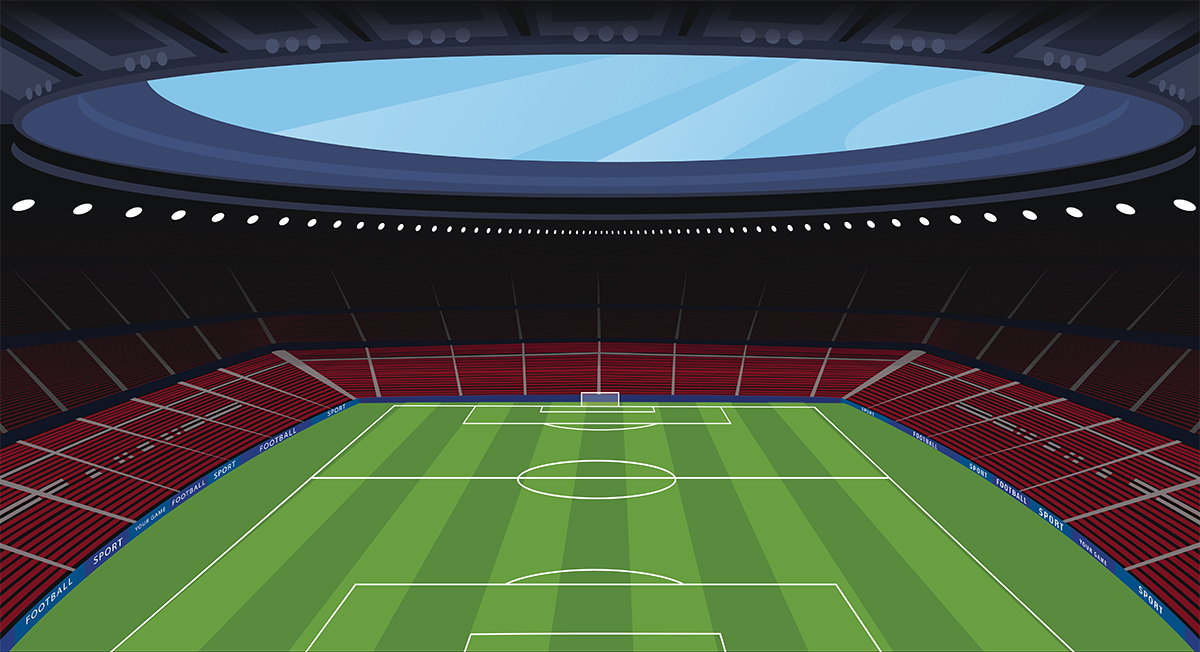
Illuminance requirements
Many complicating factors enter into design and specification decisions for stadium lighting. Quantity and quality of illumination are logically the top design considerations. The required quantity and quality of illuminance depend on the level of play, the spectator capacity, and requirement by individual sports organizations and TV broadcasters. The recommended quantity of illuminance refers to the maintained average horizontal and/or vertical illuminance. Horizontal illuminance is a measure of the amount of luminous flux of incident light on a surface parallel to the pitch at a 1m elevation. Vertical illuminance values are also taken at a 1m elevation but on 0°, 90°, 180° and 270° reference planes. Vertical illuminance is often as important as horizontal illuminance as the playing objects of most aerial sports are played and viewed in the air as least part of the time.
The quality of illumination is defined by factors including uniformity of illuminance, color rendering, glare, flicker, and modeling. Among these qualitative factors of illumination, uniformity, which indicates relationships of the illuminance over an area, is of critical importance. The adaptation problems caused by poor uniformity of light distribution can lead to distorted visual perception of the playing target both in speed and position. Very different levels of vertical illuminance over the height of the entire playing area as well as horizontal illuminance at ground level can significantly affect the visual performance of players that compete in high-speed sports on a large playing field, such as soccer, football, and baseball.
For stadiums that accommodate tens of thousands of spectators, the lighting criteria are dictated by ever more demanding high-definition TV broadcasting requirements. Quality TV broadcast of sports demands an adequately high quantity and uniformity of the illuminance in both the horizontal and vertical planes. A horizontal illuminance of 1000 lux, for example, is adequate for soccer competitions on the professional level. However, FIFA requires that Class V International televised stadiums to provide field lighting with an average horizontal illuminance of 3500 lux for superior broadcast quality. The required ratio of the lowest to the highest horizontal illuminance (U1h = Emin/Emax) should be no less than of 0.60. The minimum ratio of the lowest to the average horizontal illuminance (U2h = Emin/Eaverage) is 0.80. The average vertical illuminance required is 2400 lux. The uniformity ratio (U1v = Emin/Emax) should not be lower than 0.50.
Resource-intensive HID lighting
The exorbitant illuminance requirement places high demands on the lumen output of sports lighting systems. For many decades metal halide lamps have been the dominant source of choice for sports floodlighting. Metal halide lamps are a type of high intensity discharge (HID) light sources which generate light by creating an electric arc between two electrodes in an arc tube. These lamps can produce a substantial volume of lumens sports lighting applications thanks to their ability to operate at ultra-high-power ratings (1000W, 1500W, and 2000W+), and improved luminous efficacy over incandescent lamps. Metal halide lamps also have more desirable color characteristics than other HID sources, i.e., higher color rendering ability and the ability to emit cool white light, which are important for TV broadcasting.
While metal halide lamps have the best over-all performance among light sources employing traditional lighting technologies, they are not without drawbacks. Economics come in a very close second to quantity and quality of illumination as a design consideration for sports lighting. Notwithstanding a decent lamp efficacy of 100 lm/W (typical), metal halide flood lights have a very low lighting application efficiency (LAE) due to their poor optical delivery efficiency and intensity effectiveness. Much of the light produced by the omni-directional lamp is lost within the fixture or leaves the fixture in a direction that is not useful for the intended lighting application.
It’s impractical to implement effective lighting control strategies on HID systems to optimize energy usage because of their limited dimming ranges, long warm-up and hot restrike periods, and reduced lifespan when the bulbs are frequently cycled on and off. Another concern with HID floodlighting is the high maintenance costs arising from the short lifespan, high lamp lumen depreciation (LLD) characteristic, and envelope failure (bulb explosion) problem of high wattage metal halide bulbs.
LED technology ushers in a new era of stadium lighting
With rising concerns over the cost and environmental impact of traditional lighting technologies, there has been over the past decade an enormous move toward the use of LED technology in sports lighting systems. The monumental shift to LED lighting has been propelled by the ever-tightening energy efficiency standards as well as the compelling benefits brought by the new technology.
LEDs emit light when they’re forward biased to create radiative recombination of electrons and holes in the active region of the p-n junction semiconductor devices. This mechanism yields a high quantum efficiency in producing visible light and lends the light source a suite of other critical advantages such as small source size, long lifespan, instant on/off ability, virtually unlimited switching cycles, full range dimmability, spectral tunability, and solid state durability. The luminous efficacy of white LEDs based on phosphor conversion has hold a significant lead over previous lighting technologies and still has great room to improve.
LED technology opens up a new world of energy savings opportunities by allowing holistic optimization of all LAE factors: light source efficiency, optical delivery efficiency, spectral efficiency, and intensity effectiveness. Maintenance-free operation over a practically achievable period of 50,000 hours or even longer is another important contributor the excellent return on investment (ROI) of LED lighting products.
While LED lighting delivers incomparable economics that are of high importance to high wattage sports lighting applications, the technology also offers the opportunity to advance beyond the qualitative limitations imposed on traditional technologies. The essential uniformity challenge faced by HID lighting can be effectively addressed with LED lighting. The ability to create a surface emission device with a group of discrete LEDs and the use of precision engineered package-level optical control result in the improvement in uniformity by more than a factor of two over HID flood lights.
The inherent spectral tunability in solid state lighting enables delivery of light that has excellent color rendering ability and is more visually enhancing for player performance and TV broadcasting.
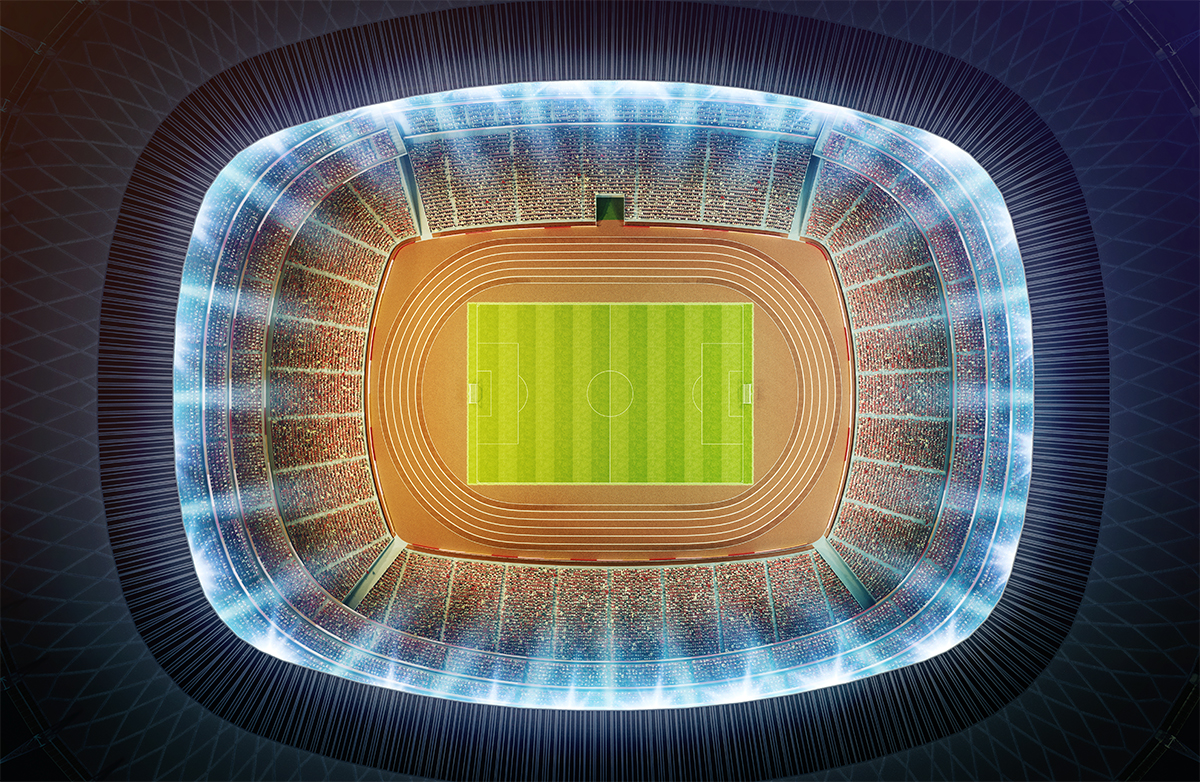
Dealing with the complexity of LED operation
LED stadium lights are ultra-powerful lighting systems that can draw up to 2000 watts of electrical power and produce astonishingly high output in packages of tens to hundreds of thousands of lumens. These high power LED flood lights are multidimensional engineering works which involve a high level of thermal, electrical, optical, and mechanical integration.
LEDs are complex, sophisticated semiconductor devices that are designed to operate in an environment with electrical power, temperature, humidity, and other parameters controlled under specified ranges. Therefore, a holistic approach to system development is necessary to address the integration challenges arising from the tightly interdependent optoelectronic (luminous flux and efficiency), electrical (current, voltage, power) and thermal (junction temperature) characteristics of the semiconductor emitters.
The outdoor use of a high power LED system can leave the LEDs and other system components to high operational and environmental stresses. For LED stadium lights to perform their required functions under challenging operating conditions for a specified period of time, all failure mechanisms in LEDs caused by intrinsic and extrinsic factors must be identified and addressed. While LED technology enables an infinite variety of design possibilities for LED stadium lights in both function and form, the essentials of system integration never change.
A high-performing LED flood light is a highly engineered system that thoughtfully integrates LEDs, driver and control circuitry, thermal management systems, and optics. The physical integration which occurs between the LEDs, optics and heat sink is implemented at either the luminaire-level or the module-level. Luminaire-level integration creates a product that produces light from a single optical assembly, whereas modular design creates a scalable, ultra-high-power capable system framed up by a calculated number of self-contained light engines.
The LED driver is either physically separated or thermally isolated from the LED light engine in an intention to prevent the LED thermal load from stressing and degrading the circuit components.
Light source
System development of LED stadium lights revolves around integrating the LED source with the other luminaire components. The LED package selection affects how the entire lighting should be integrated because different LED package platforms can create products with varied behaviors under thermal and electrical stresses. High power LED packages are the usual choice of light source for high power LED stadium lights because the fundamental packaging philosophy of these ceramic-based LEDs provides a high efficiency thermal path to draw the heat away from the semiconductor junction of the LEDs. This LED architecture enables operation of LEDs at a high power density, resulting in high optical flux densities. Another type of LED packages which are gaining prominence in high power applications are chip-scale package (CSP) LEDs. These flip-chip LEDs strip out as many of the superfluous package elements as possible to minimize thermal resistance and maximize lumen maintenance performance and color stability.
Color quality
Regardless of the package platform, the color characteristics of a phosphor-converted LED are determined by the wavelength converting element (down-converter). Control of material composition and layer thickness of the phosphor down-converter can set the spectral power distribution (SPD) that defines the correlated color temperature (CCT) and color rendering index (CRI) of the LEDs. The use of a cooler light source (4000K+) is a common practice in outdoor sports lighting applications. Many LED stadium lights are produced at a CCT of 5600K in order to match the color preference of the HD image sensors of video cameras.
Cooler white light has relatively higher amounts of blue light that can stimulate the ipRGC photoreceptors to enhance vitality, alertness and concentration for players. LEDs with higher CCTs generally have a higher luminous efficacy than those with lower CCTs due to the lower wavelength-conversion losses (lower Stokes-shift losses) and closer match with the eye sensitivity curve. This economic factor plays a huge role in the widespread use of cool white LEDs in a range of lighting applications. It also affects the selection of the CRI of the LEDs. The color rendering ability and luminous efficacy of phosphor-converted LEDs are also in a trade-off. However, this trade-off is not critical when high color rendering lighting is a priority.
Conventional stadium lighting delivers a typical CRI of 65. LED lighting affords the hardcore fans enjoying game in person a chance to enjoy much higher color fidelity lighting and enables the ability to deliver SPD that are engineered to improve television lighting consistency index (TLCI) for television and video cameras. It’s economically practical for LED stadium lights to deliver visually pleasant lighting with a minimum CRI of 80 and TLCI of 75 for the highest class of play. Many stadiums are designed as multi-sports facilities that desire flexible lighting to create a custom scene for each type of event. Tunable white LED flood lights rise to the challenge by providing a continuously adjustable range of color temperatures.
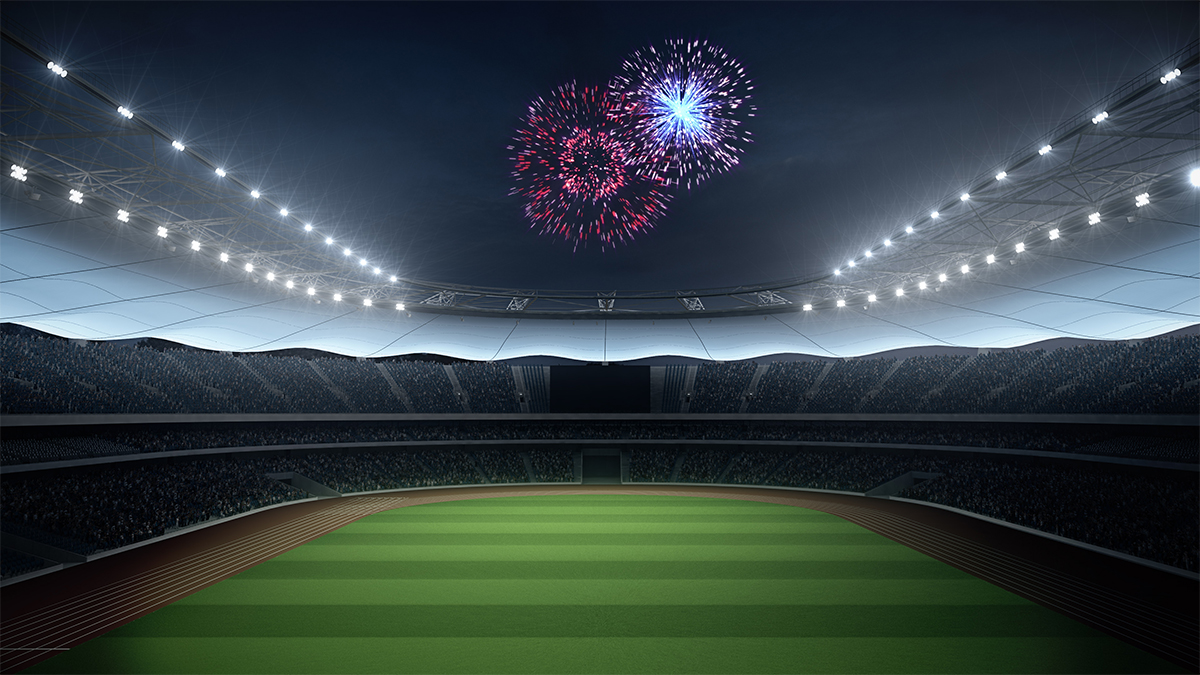
Thermal engineering
As LED technology pushes the boundaries of lighting performance, thermal management continues to pose an enormous challenge to development of high power LED sports lighting systems. Notwithstanding the dramatic improvement in power conversion efficiency, LEDs still convert less than 50% of the electrical power they are fed into light. The remaining power is converted into heat that must be dissipated from the LED package through conduction as opposed to radiation as seen in incandescent sources. The ability of an LED stadium light to draw heat away from the LED junction is critical to system performance and reliability. The internal quantum efficiency of an LED is a function of its junction temperature, which also affect phosphor quantum efficiency. Elevated operating temperatures can accelerate crystal defect formations in the epitaxial layer structure of the diode and cause phosphor thermal degradation, which results in irreversible damage to the LED.
A high power LED system can generate an extremely high thermal load, the thermal transfer path therefore must be dimensioned to handle this load. To accomplish this mission, thermal resistance of all of the components along the path from junction to air should be minimized. The critical elements that make up the thermal management solution for an LED luminaire include the solder joints (interconnects), metal-core printed circuit board (MCPCB), thermal interface material (TIM), and heat sink. The formation of a reliable solder joint between the LED package and MCPCB is immensely important not just for thermal conduction, but also the reliability of the entire lighting system. The solder joint must create a strong metallurgical bond with excellent creep and vibration resistance. High creep resistance of the solder joints can limit the amount of strain energy build-up incurred in thermal cycling which is often present in outdoor sports lighting systems. The MCPCB is made out of a dielectric layer sandwiched between a copper layer and aluminum plate to ensure a good thermal path between the LEDs and the heatsink while providing electrical insulation. The TIM is used to minimize contact resistance due air trapped in the interface between the MCPCB and heat sink.
The heat sink functions as a thermal reservoir that absorbs the heat dissipated by the LEDs and then acts as a heat spreader that dissipates the heat into the ambient air via convection and radiation. It typically comes as one piece with the housing and is constructed from an aluminum alloy through die casting, cold forging, or extrusion. The heat sink design often features a geometry that maximizes convection surface area and heat transfer coefficient. Heat pipes may be used to facilitate heat dissipation when physical constraints limit heat sink design.
Drive current regulation
The LED driver is a critical sub-system in determining the system behavior, efficiency and life of an application. It acts as the power supply that converts alternating current (AC) line power to direct current (DC) power compatible with the LED load. It also provides fault protections against overcurrent, short-circuit, overvoltage, over-temperature, and other stress conditions. In order to adequately protect the LEDs as well as sensitive circuits and components in LED drivers for outdoor applications, line transient protection must be an integral part of driver circuit design.
As sports lighting is evolving from fixed output device towards intelligent, programmable lighting, the LED driver often incorporates control circuitry to provide dimming functionality, constant light output (CLO), color mixing, and/or interoperability with environmental sensors for occupancy control and daylight harvesting. A desired mode of operation can be configured by communications from an external device to the control circuitry. This type of driver has an analog or digital interface that can interpret control signals transmitted using a protocol such as 0-10VDC, DALI, DMX, Bluetooth, ZigBee, Z-Wave, or Wi-Fi.
LED drivers incorporated in high power lighting systems are typically designed as two-stage drivers which implements active power factor correction (PFC) independent of the DC-DC converter stage. The active PFC is provided by a switching regulator operating at a high switching frequency to maintain high power factor over a wide input voltage range while suppressing the harmonic current. Two-stage LED drivers hold enormous advantages over single-stage counterparts. They’re capable operating over wide variations in line voltage and may be controlled with control variables in a full range. The circuit architecture of two-stage drivers can handle the stringent requirement on power conversion efficiency for systems operating at high power levels while also helping reduce overvoltage to the power MOSFETs during surge events.
A killer advantage of implementing two-stage solutions in sports lighting applications is that they can address the need for flicker-free lighting. The two-stage driver circuit can effectively filter the output current ripples which can cause LEDs to flicker. Flicker in sports lighting has two consequences. The first issue is the visual perception of the speed of a fast-moving playing target can be distorted, thus affecting visual performance. The second issue is rated to high-speed and super-slow-motion recordings. The presence of flicker can lead to frame-to-frame exposure variance and restrict the range of slow motion in TV broadcasting. Use of high-speed video cameras for slow motion may require the LED driver to limit ripple value within ±3% for higher video quality.
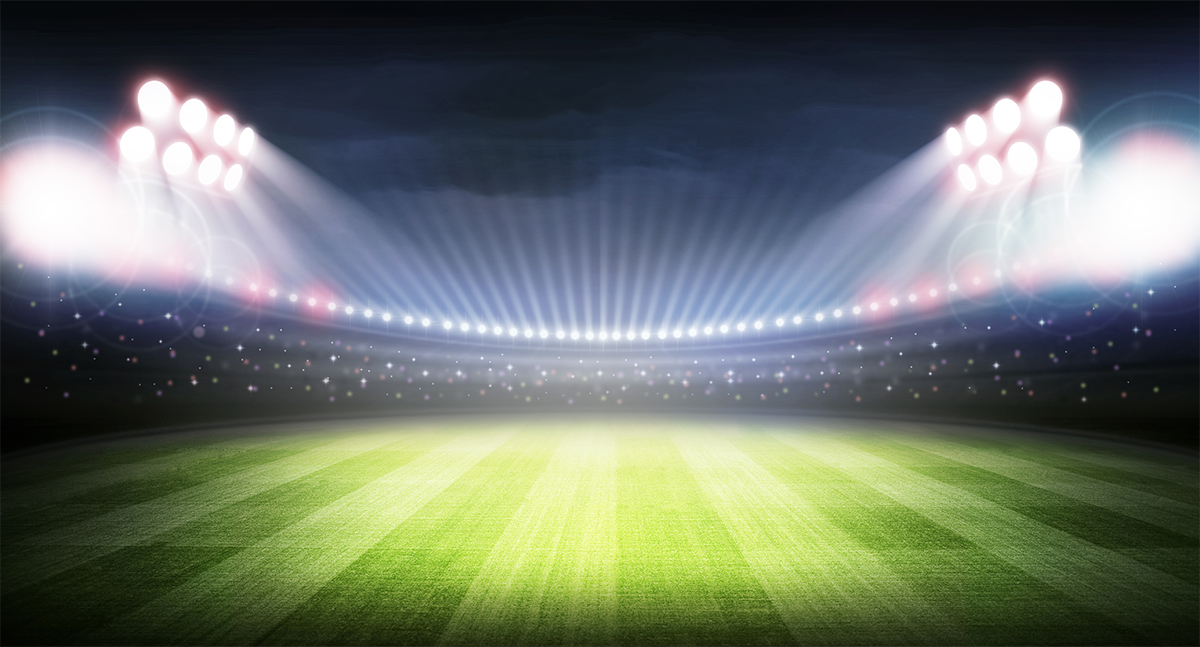
Optical engineering
An effective lighting system calls for effective optical regulation of luminous flux from its light source. LEDs emit light from a small package in a specific direction, which lends themselves to a greater variety of optical arrangements for precisely controllable light distributions with virtually no spill lumens. The light distribution of an aimable floodlight which is known as the “beam spread” is classified by a NEMA designation (Type 1 to 7, with the narrowest beam being Type 1 and the widest being Type 7). LED flood lights can be designed to produce light distributions with precision beyond the definition of the NEMA beam classifications. The beam of an LED stadium light may be designed in a symmetric or asymmetric pattern, which offers maximum design flexibility.
LED stadium lights use lenses, reflectors, or combinations of them to control the entire initial distribution from the source. Lenses, in particular those using multiple elements to achieve more optical aberrations to be corrected than it is possible with a single lens, are more efficient in shaping the beam than reflectors. Total internal reflection (TIR) lenses can produce smooth, very tight beams with FWHM angular widths as small as less than 10 degrees with minimal optical loss (less than 10%). However, lenses are generally made from plastic resins which are limited in thermal stability.
The high-power LED architecture often places the highest thermal stress to the phosphor and binder materials (rather than the LED junction) due to Stokes shift and light absorption. Phosphor temperatures can easily exceed 120°C. This can challenge the thermal stability of lenses that are often in close proximity to the LEDs. Polycarbonate resins are more thermally stable than acrylic resins. However, their continuous use in high temperature environments can raise concerns of thermal degradation. To address this problem, the optical system can instead use aluminum reflectors or lenses made from a high operating temperature capable material, such as silicon resin.
Control over environmental factors
LED stadium lights need to perform reliably in outdoor environments as they are continuously exposed to harsh elements such as rainstorms, moisture, corrosive atmosphere, ultraviolet (UV) radiation, dust, sand, and high winds. To prevent these environmental factors from impacting performance and longevity of the luminaires, it is necessary to exercise control of environmental conditions for all vulnerable components.
A key factor in excluding extrinsic failures is ingress protection (IP). Considering the ambient conditions prevailing in outdoor environments, a stadium light should be thoroughly sealed and gasketed at all points of entry and material transition to an IP66 rating or higher. Pressure differentials in forms of pressure build-up and vacuums can be created when a sealed luminaire enclosure is exposed to rapid, extreme or recurring changes in ambient conditions. Installing a microporous membrane vent in a sealed enclosure allows the inside of the enclosure to atmospherically equalize with the outside environment, thereby eliminating the potential for moisture vapor to condense on lenses and reflectors, and preventing pressure changes from putting extreme stress on the housing seals.
Corrosion control of all expose metal surface should be upheld to the highest level to ensure the survivability of the luminaire under corrosive attacks by air- and water-borne acids, alkalis, and salts. Proper application of chemical surface treatments is the most important step in the corrosion control process for aluminum housings. These surface treatments form a protective film that acts as a barrier between the corrosive environment and the aluminum surface. The conversion coating, which is a common surface treatment for aluminum, is also a pretreatment for organic coatings (e.g., polyester powders) to increase the adhesion to the substrate.

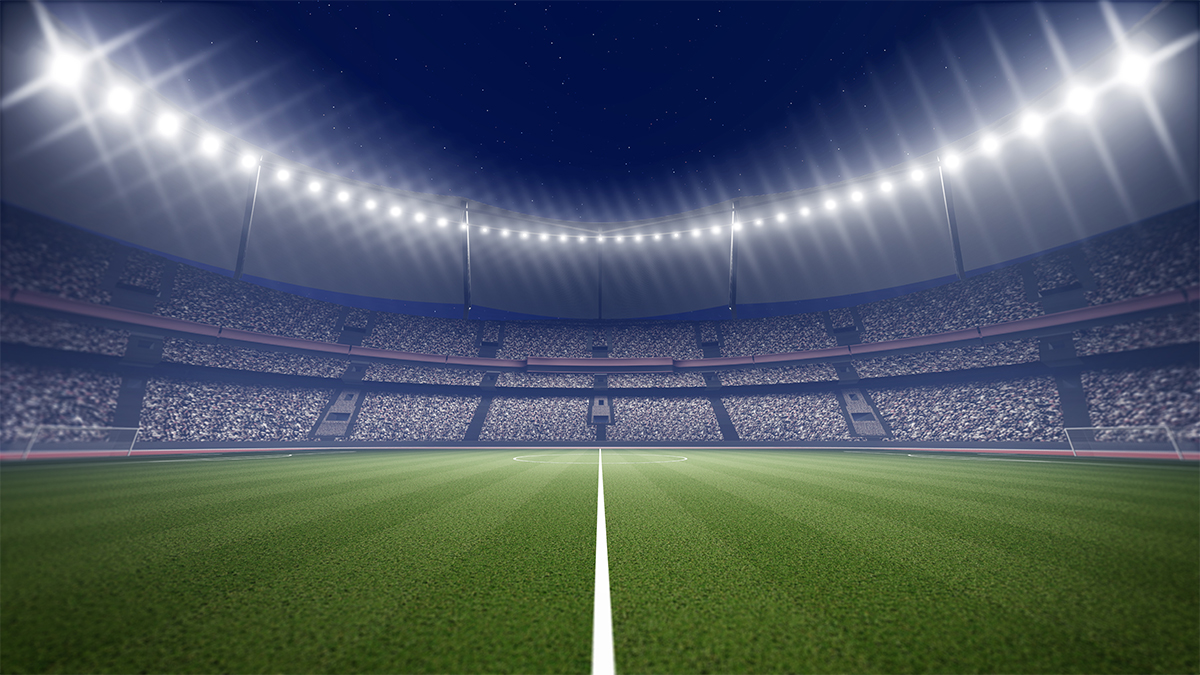
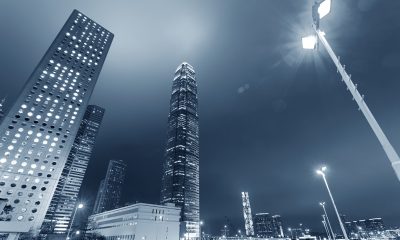
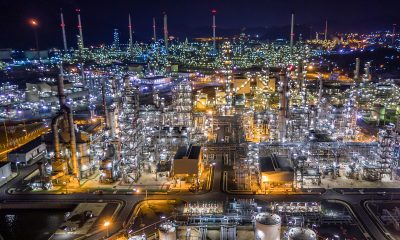
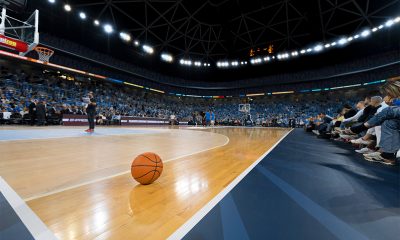
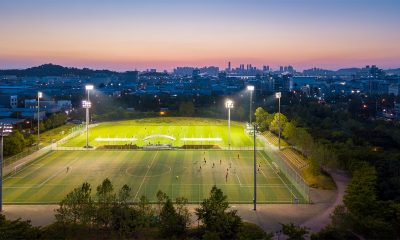
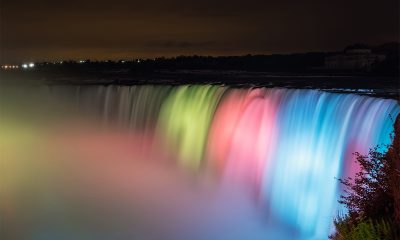
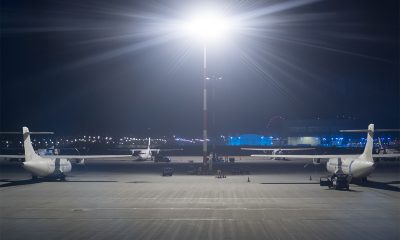
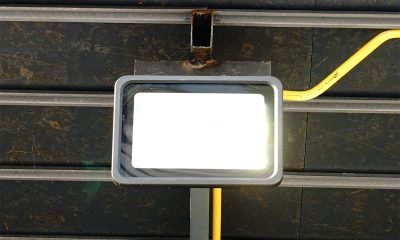
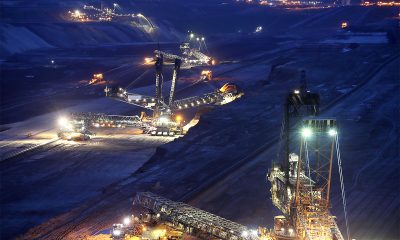
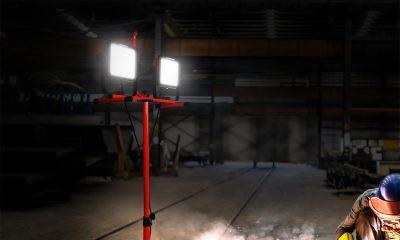
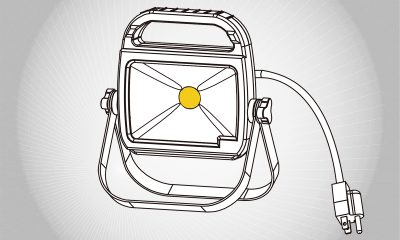
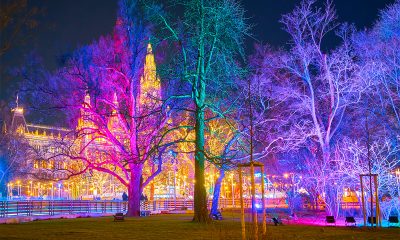
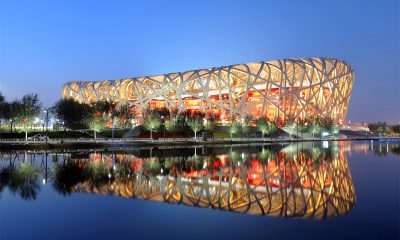





Loading...
New member
New member